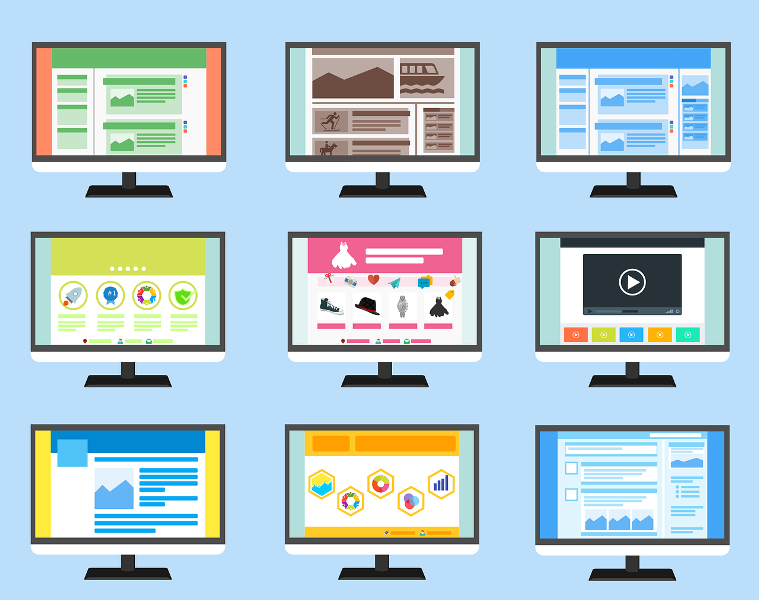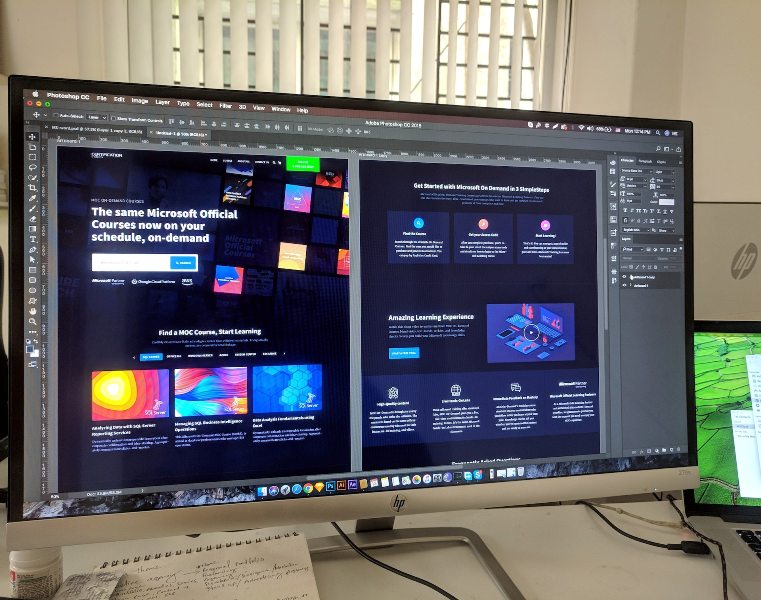
As technology evolves, website design trends change and your customer’s needs may differ from when you first created your website. Whether to improve usability, increase conversions, or stay up to date with the latest design trends, a website redesign can be beneficial for any business.
In today’s digital age, having a website is essential for any business or organisation. A website serves as an online storefront that showcases your products or services, attracts potential customers, and helps you build a strong online presence.
However, just having a website is not enough. To stay competitive and relevant, you need to update and redesign your website regularly.
In this article, we’ll discuss the reasons why you should redesign your website, when to do it, and the benefits of a redesign.
Why Should You Redesign Your Website?
There are many reasons why you might need to redesign your website. Here are a few common ones:
- Outdated Design: If your website design is outdated, it can turn off potential customers and make you look unprofessional. A redesign can help you update your website’s look and feel, making it more appealing to visitors.
- Poor User Experience: If your website is hard to navigate, slow to load, or not mobile-friendly, visitors are likely to leave quickly. A redesign can improve your website’s user experience and make it more user-friendly.
- Change in Branding: If your business has undergone a rebranding, your website should reflect the new brand identity. A redesign can help you update your website to align with your new branding.
- Change in Business Goals: If your business has changed its focus or services, your website should reflect those changes. A redesign can help you update your website to align with your current business goals.
- Technological Advancements: As technology evolves, websites need to keep up with the latest trends and developments. A redesign can help you update your website’s technology to ensure it’s up-to-date.
When to Redesign Your Website?
Knowing when to redesign your website is crucial to its success. Here are a few signs that it’s time for a redesign:
- Low Traffic: If your website isn’t getting much traffic, it’s a sign that it’s not meeting the needs of your target audience. A redesign can help you make your website more appealing to visitors and increase traffic.
- High Bounce Rate: If visitors are leaving your website soon after arriving, it’s a sign that they’re not finding what they’re looking for. A redesign can help you improve your website’s user experience and reduce the bounce rate.
- Low Conversion Rates: If visitors are not taking the desired action on your website, such as making a purchase or filling out a form, it’s a sign that your website is not effective in converting visitors into customers. A redesign can help you improve your website’s conversion rates.
- Outdated Content: If your website’s content is outdated, it can harm your SEO and make you look unprofessional. A redesign can help you update your content and ensure it’s relevant and engaging.

The Benefits of Redesigning Your Website
Ease of Navigation and Usability
One of the key benefits of a website redesign is improved navigation. Your customers need to be able to find the information they’re looking for quickly and easily. If your old website design has too many pages, takes too long to load, or has poor search capabilities, it’s time for a redesign.
An effective website design should also make use of colours and fonts that are easy to read and have logical page groupings and categories that clearly display important content.
Improved SEO Performance
A website redesign can help your business gain exposure by improving its SEO performance. Optimising a website for search engines is an important part of digital marketing.
Many businesses are unaware of the importance of having high-quality content, optimised page titles and descriptions, meta tags, image alt text and other technical aspects of SEO. A website redesign gives you the opportunity to update this information, making it easier for customers to find you when they need your services.
Enhanced Brand Identity and Customer Trust
A website redesign allows businesses to create a stronger brand identity. This can be achieved by choosing an appropriate colour palette, fonts and website design features that best represent the company’s brand.
Customers are more likely to trust a business when they are easily able to identify its brand and message throughout the entire website. A solid, unique visual style instils confidence in potential customers that your business is professional and reliable.
Increased Visibility Across Devices and Platforms
With technological advances, people are using different devices and platforms to access websites. It is essential for businesses to create a website that looks good and operates well across all of these devices and platforms.
A website redesign will ensure compatibility with the most popular devices and platforms so your business can reach the widest possible audience. A successful website must look great and function well on desktops, tablets, and mobile phones as these are the devices most often used by customers.
Improved Conversion Rates and Results Tracking
Redesigning your website can improve conversion rates and results tracking. By adding the right features, you can collect more data about your customers which will help you understand their behaviours and make informed decisions about how to market your services or products.
Additionally, a great design will allow you to better track visitor engagement with features such as heatmaps and analytics that can give you detailed information on how long visitors are staying on pages and how they interact with other elements on the page.
How Long Does It Take to Redesign a Website?
The time it takes to redesign a website can vary depending on the size and complexity of the website. A simple redesign can take a few weeks, while a more complex redesign can take several months. To ensure a smooth and successful redesign, it’s important to plan and allocate enough time for each stage of the process.
Here are the typical stages of the website redesign process:
- Planning and Research: This stage involves gathering information about your current website, target audience, competitors, and business goals. It also involves creating a plan for the redesign, including the design, content, and functionality.
- Design: This stage involves creating a mockup of the new website design, including the layout, colours, fonts, and imagery.
- Development: This stage involves coding the new website design, integrating functionality such as forms, shopping carts, and social media feeds and testing the website for functionality and usability.
- Content Creation: This stage involves creating and optimising new content for the website, including text, images, and videos.
- Launch: This stage involves launching the new website and ensuring that all the functionality works as expected.
Depending on the complexity of the website and the number of revisions needed, the redesign process can take anywhere from a few weeks to several months.
How Much Money Does It Take to Redesign a Website?
The cost of a website redesign can vary depending on the scope and complexity of the project. A simple redesign can cost a few thousand dollars, while a more complex redesign can cost tens of thousands of dollars.
Here are some factors that can affect the cost of a website redesign:
- Size and Complexity of the Website: The larger and more complex the website, the more it will cost to redesign.
- Customisation: Customising the design, functionality, and content of the website can increase the cost of the redesign.
- Agency or Freelancer: Hiring an agency or a freelancer can affect the cost of the redesign. Agencies tend to charge more but offer more comprehensive services, while freelancers tend to charge less but may not offer the same level of expertise and support.
- Technology and Tools: Using advanced technology and tools can increase the cost of the redesign but can also provide a more robust and efficient website.
It’s important to budget for a website redesign to ensure that you get the best results for your investment.
How Often Should You Redesign Your Website?
The frequency of website redesigns can vary depending on the industry, business goals, and website performance. However, as a general rule, it’s recommended to redesign your website every 2-3 years.
This allows you to keep up with the latest trends and developments in technology, design, and user experience. It also ensures that your website is aligned with your current business goals and branding.

When And Why Not Redesign Your Website?
While there are many good reasons to redesign your website, there may be some situations where a redesign is not necessary or may not be the best course of action.
Here are some situations where you may not need to redesign your website:
- Your website is relatively new: If you’ve recently launched a new website and it’s performing well, you may not need to redesign it for a few years.
- Your website is already meeting your goals: If your website is meeting your business goals, such as generating leads or sales, there may be no need to redesign it.
- Your website is mobile-friendly: If your website is already mobile-friendly and optimised for search engines, you may not need to redesign it.
- Your website is still relevant and attractive: If your website still looks good and is relevant to your target audience, there may be no need to redesign it.
- Your budget doesn’t allow for a redesign: If you don’t have the budget to invest in a website redesign, it may be better to focus on improving your existing website through small updates and improvements.
It’s important to carefully evaluate your website and business goals before deciding whether or not to redesign your website.
Additionally, there are certain situations where a redesign may not be the best course of action.
Here are some examples:
- Lack of planning: A redesign without proper planning and research can result in a website that’s not aligned with your business goals or target audience.
- Poor website performance: If your website is underperforming, a redesign alone may not solve the problem. It’s important to identify the root cause of the performance issues and address them appropriately.
- Lack of user testing: User testing is essential to ensure that your new website design is user-friendly and meets the needs of your target audience. Skipping this step can result in a poorly designed website that doesn’t meet user needs.
- Constant redesigns: Redesigning your website too frequently can be counterproductive and result in a disjointed user experience. It’s important to find a balance between keeping your website up-to-date and not making too many changes too frequently.
In summary, while there are many good reasons to redesign your website, it’s important to carefully evaluate your website and business goals before deciding whether or not to redesign.
Additionally, a poorly planned or executed redesign may not solve existing problems and can result in a poor user experience.
Conclusion
A website redesign can have many benefits for your business or organization, including improved user experience, increased traffic, better conversion rates, and improved branding. Knowing when to redesign your website, how long it will take, and how much it will cost can help you plan and budget for a successful redesign.
It’s also important to redesign your website regularly to ensure that it stays up-to-date and aligned with your business goals.
How Can DesignQ Help?
We’ve been in the business for almost 20 years, and have helped hundreds of businesses increase sales and drive traffic with our customised and professional web design and development solutions.
You can check out our web design portfolio here, call 1300 48 68 48 or click here to book a 30-minute consultation to discuss your requirements.










